Welcome to the heart of the Big Apple! As a seasoned traveler and content creator specializing in uncovering the soul of destinations, let me tell you, New York City is more than just a collection of buildings; it’s a living, breathing entity brimming with history, culture, and unforgettable experiences.
Exploring the new york most famous places offers a journey through iconic landmarks that have shaped global imagination, each with its own story waiting to be discovered. Whether it’s your first time or a return visit, the city’s energy and endless attractions promise an adventure that touches on every aspect of human endeavor, from art and architecture to poignant history and vibrant street life. If you’re wondering [what to see in new york], you’ve come to the right place.
Let’s dive into the must-see locations that define the city’s legendary status.
The Statue of Liberty: A Beacon of Freedom
Standing proudly on Liberty Island, the Statue of Liberty isn’t just a landmark; it’s a powerful symbol of freedom and a welcoming sight for generations. Gifted by France in 1886, this colossal copper statue remains a world-renowned icon. You can admire Lady Liberty from various points on the Manhattan waterfront, like Battery Park, but getting up close on a ferry trip is truly special. Walking around the base offers a different perspective, and if you plan well in advance, ascending to the pedestal or even the crown provides breathtaking views and a profound sense of history.
A trip to the Statue of Liberty often includes a stop at Ellis Island, home to the Immigration Museum. This historic station processed millions of immigrants, and the museum beautifully chronicles their journeys and contributions, allowing you to connect with the human stories behind the city’s diverse population. It’s a moving reminder of the melting pot that New York truly is. Pre-purchasing tickets for ferry access and statue entry is highly recommended, especially during peak travel seasons, to save time and guarantee access.
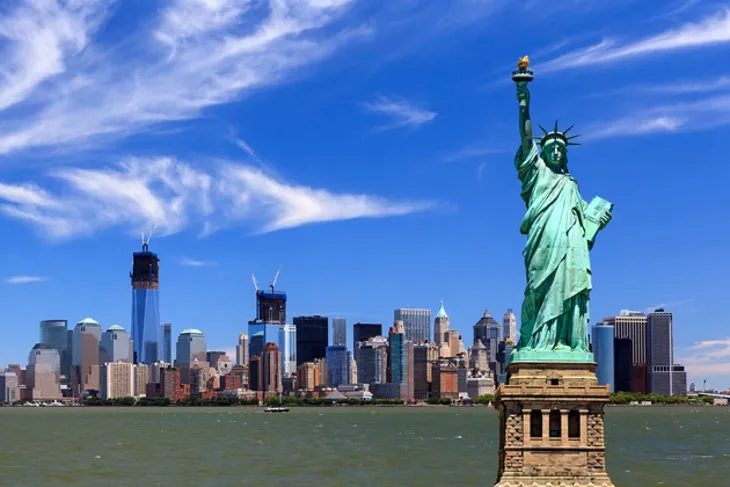 Close-up view of the Statue of Liberty holding torch, a symbol of freedom and a top New York attraction.
Close-up view of the Statue of Liberty holding torch, a symbol of freedom and a top New York attraction.
Central Park: Manhattan’s Green Heart
Escaping the urban buzz is essential, and Central Park provides that perfect sanctuary. This vast green space, meticulously designed by Frederick Law Olmsted and Calvert Vaux, is a masterpiece of landscape architecture and a vital part of NYC life. Whether you stroll, jog, bike, or take a leisurely horse-drawn carriage ride, the park offers endless opportunities for relaxation and recreation.
Beyond its natural beauty, Central Park is dotted with attractions. Explore the enchanting Strawberry Fields, a memorial to John Lennon, climb up to Belvedere Castle for panoramic views, visit the charming Central Park Zoo, or rent a rowboat on The Lake. It’s a place where you can stumble upon a free concert, watch street performers, or simply find a quiet bench to read. Central Park is proof that even in a city of skyscrapers, nature finds a way to thrive, offering a vital escape for locals and visitors exploring the new york most famous places.
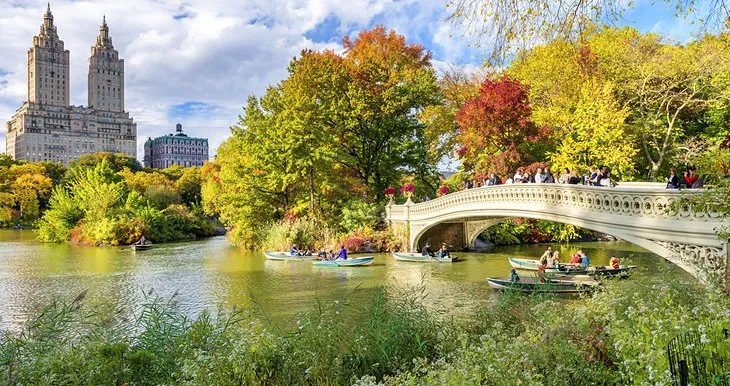 Boats on The Lake with Bow Bridge in Central Park, New York City.
Boats on The Lake with Bow Bridge in Central Park, New York City.
Rockefeller Center & Top of the Rock: Views and Vibrancy
Rockefeller Center is a bustling complex that perfectly captures the energy of Midtown Manhattan. Home to media giants and an impressive collection of Art Deco architecture, its centerpiece is the iconic 30 Rockefeller Plaza building. For unparalleled views, head to the Top of the Rock Observation Deck. Spread across three floors, the outdoor terraces here offer stunning 360-degree vistas that include the Empire State Building and Central Park – a must-see panorama when visiting the new york most famous places. Buying tickets in advance, especially with flexible options, is a smart move to beat the crowds and ensure you get to experience this view, whether by day or glittering night.
In winter, the plaza transforms with its famous ice-skating rink and the towering, beautifully decorated Christmas tree, drawing crowds and embodying the festive spirit of New York. It’s a scene straight out of a movie. Don’t forget to admire the sculptures and murals scattered throughout the complex, reflecting the artistic vision behind this urban marvel.
Where to Go After Las Vegas? Top Road Trips & Destinations
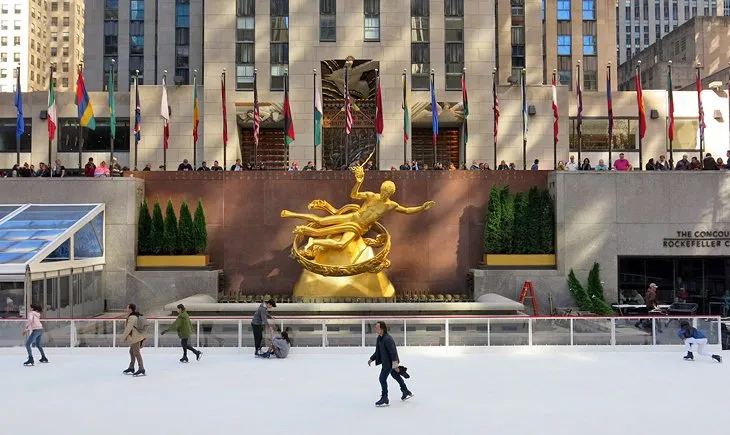 Outdoor ice skating rink at Rockefeller Center during winter in New York City.
Outdoor ice skating rink at Rockefeller Center during winter in New York City.
The Metropolitan Museum of Art (The Met): A World of Art
Culture enthusiasts rejoice! The Metropolitan Museum of Art, affectionately known as The Met, is one of the world’s largest and finest art museums. Founded in 1870, its permanent collection spans over 5,000 years of human creativity, featuring everything from Egyptian temples and classical sculptures to European masters and modern art. Walking through its vast halls is like a journey around the globe and through time.
Beyond its main Fifth Avenue location, don’t miss The Met Cloisters in Fort Tryon Park. This branch focuses on medieval European art and architecture, housed in a breathtaking setting overlooking the Hudson River. It’s a peaceful retreat and a hidden gem among New York’s cultural offerings. The Met is an essential stop for anyone seeking to understand the depth and breadth of human artistic expression within the city.
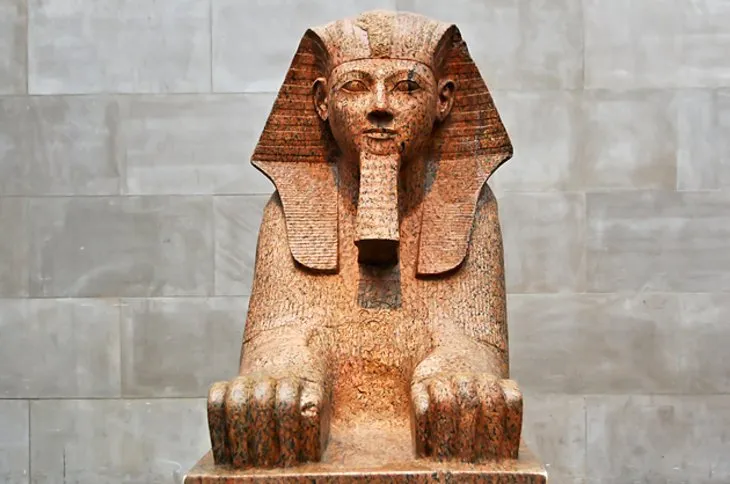 Exterior view of the grand facade of the Metropolitan Museum of Art (The Met) in New York.
Exterior view of the grand facade of the Metropolitan Museum of Art (The Met) in New York.
Broadway and the Theater District: The Magic of Live Performance
No visit to New York is complete without experiencing the magic of a Broadway show. The Theater District, centered around Times Square, is the epicenter of American theater, home to dazzling musicals, compelling dramas, and star-studded performances. Attending a show here is an iconic New York experience, a testament to the city’s vibrant performing arts scene.
Securing tickets, especially for popular productions, often requires booking well in advance. The energy of the district before and after shows is palpable, with crowds spilling out onto the streets, discussing their favorite moments. Exploring the historic theaters and soaking in the atmosphere, perhaps strolling down Shubert Alley, offers a glimpse into the rich legacy of Broadway. It’s a chance to be transported by storytelling and performance, a truly unique part of exploring the new york most famous places.
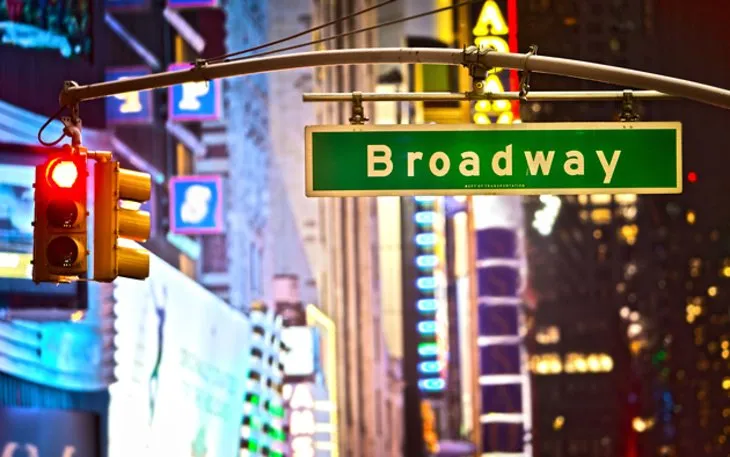 Marquees and bright lights of theaters along Broadway in the New York Theater District.
Marquees and bright lights of theaters along Broadway in the New York Theater District.
The Empire State Building: An Art Deco Icon
The Empire State Building is arguably the most recognizable skyscraper in the world and a quintessential part of the New York skyline. Completed in 1931, this Art Deco masterpiece stood as the world’s tallest building for over 40 years. Its elegant design and sheer scale continue to inspire awe.
The building offers two observation decks: the main deck on the 86th floor (partially open-air) and a smaller, enclosed deck on the 102nd floor. Both provide spectacular panoramic views of the city and surrounding states on a clear day. The journey up itself is part of the experience, with informative exhibits detailing the building’s history and construction. Lines can be notoriously long, so consider a skip-the-line ticket to maximize your time exploring other new york most famous places.
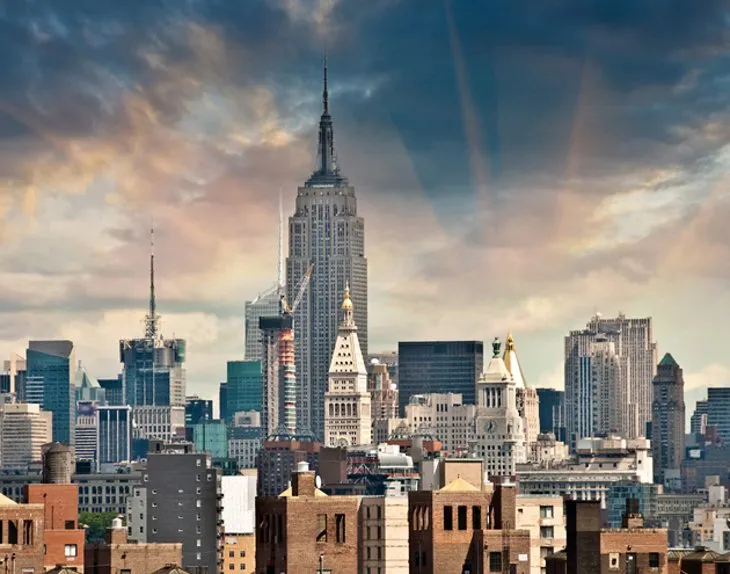 The art deco spire of the Empire State Building against a blue sky in New York.
The art deco spire of the Empire State Building against a blue sky in New York.
If you’re planning your trip and thinking about [what to visit in new york], these first few landmarks are absolutely essential to include in your itinerary. They capture the scale, ambition, and cultural richness that the city is known for.
9/11 Memorial and Museum: Reflection and Remembrance
A visit to the site of the former World Trade Center towers is a profoundly moving experience. The National September 11 Memorial consists of two vast reflecting pools set within the footprints of the Twin Towers. Water cascades into these pools from all sides, a solemn and powerful tribute to the nearly 3,000 lives lost in the 2001 attacks and the 1993 bombing. The names of the victims are inscribed on bronze panels surrounding the pools, a poignant reminder of the tragedy.
Adjacent to the memorial is the 9/11 Memorial Museum, an architectural marvel built around the remnants of the original structures. The museum uses artifacts, personal stories, photos, and videos to tell the story of 9/11, its impact, and the resilience that emerged. It’s a place for reflection, understanding, and remembrance. While emotional, visiting the memorial and museum is an important part of understanding modern New York’s history and spirit. Booking tickets online in advance is strongly advised due to high demand. Nearby, the stunning Oculus Plaza at the Westfield World Trade Center offers striking architecture and a transportation hub.
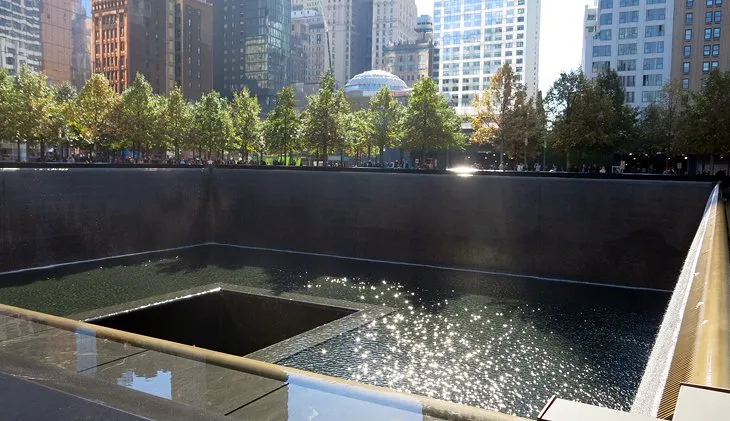 One of the twin reflecting pools at the National September 11 Memorial in New York.
One of the twin reflecting pools at the National September 11 Memorial in New York.
American Museum of Natural History: Dinosaurs and Discovery
A fantastic destination for visitors of all ages, the American Museum of Natural History is dedicated to exploring the natural world and human cultures. From enormous dinosaur skeletons and impressive taxidermy dioramas to exhibits on ocean life, geology, and anthropology, there’s a universe of knowledge packed into its halls.
A recent and exciting addition is the Richard Gilder Center for Science, Education, and Innovation, which opened in 2023. Its flowing, cavern-like architecture is an attraction in itself, housing a new insectarium, butterfly conservatory, and immersive exhibits that offer fresh perspectives on science and nature. It seamlessly blends with the museum’s classic wings, making a visit even more dynamic. It’s a place where learning is an adventure, perfect for families exploring [what to do in newyork].
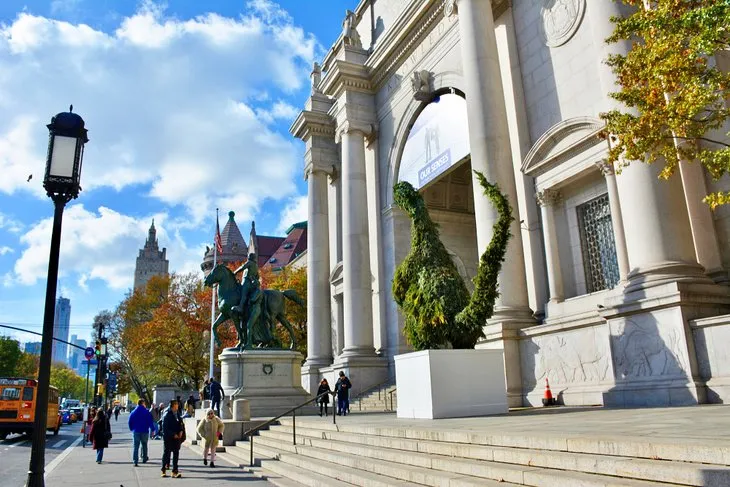 Exhibit hall with large dinosaur skeleton fossil at the American Museum of Natural History.
Exhibit hall with large dinosaur skeleton fossil at the American Museum of Natural History.
The High Line: An Elevated Urban Oasis
The High Line is a remarkable example of urban renewal, transforming a disused elevated railway into a beautiful public park. This linear park stretches from Gansevoort Street to 34th Street on Manhattan’s West Side, offering unique views of the city, art installations, and native plantings. Walking the High Line provides a peaceful escape above the street level hustle.
The park features benches, art displays, and viewing platforms, including the popular bleacher-style seating area overlooking the street. The design cleverly integrates elements of the old railway, creating a sense of history within the modern green space. It’s a wonderful place for a leisurely stroll, offering different perspectives on the surrounding architecture and the Hudson River. The southern end is near the trendy Meatpacking District and the Whitney Museum, while the newly added Moynihan Connector provides access towards the Penn Station area, integrating it further into the city’s fabric.
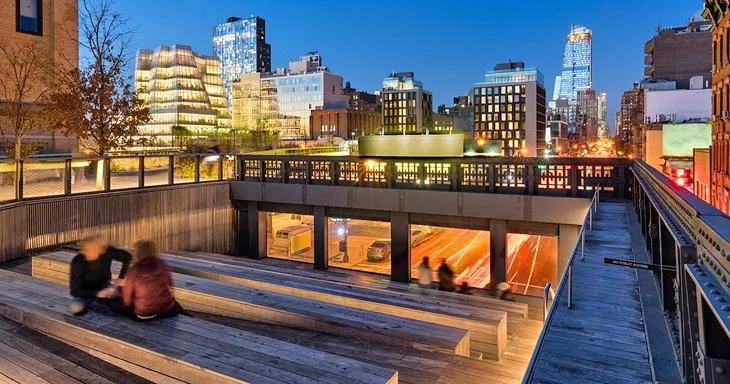 Elevated walking path of The High Line urban park at night, looking south.
Elevated walking path of The High Line urban park at night, looking south.
Times Square: The Crossroads of the World
Brash, bright, and always buzzing, Times Square is one of New York’s most famous and frenetic spots. Dominated by massive digital billboards and flashing lights, it’s a sensory overload that has to be experienced to be believed. Known as the “Crossroads of the World,” it’s the site of the iconic New Year’s Eve ball drop and a constant hub of activity.
While perpetually crowded, there’s an undeniable energy here. Take a seat on the red steps of the TKTS booth for a fantastic vantage point to people-watch and soak in the dazzling spectacle. Times Square is surrounded by theaters, restaurants, and shops, embodying the fast-paced, commercial heart of the city. It’s a place that truly comes alive at night, a defining image among the new york most famous places.
 Bright billboards and crowds of people in Times Square, New York City.
Bright billboards and crowds of people in Times Square, New York City.
Brooklyn Bridge: A Historic Connection
An architectural marvel and a beloved landmark, the Brooklyn Bridge connects Manhattan and Brooklyn across the East River. Completed in 1883, it was the first steel-wire suspension bridge and a triumph of engineering. Its gothic-arch stone towers and intricate web of cables are instantly recognizable.
Walking or biking across the dedicated pedestrian walkway is one of the best ways to experience the bridge and get stunning views of the Manhattan skyline, the Statue of Liberty, and the surrounding waterways. The walk takes about 30-60 minutes, depending on your pace and how often you stop for photos. It’s a simple yet incredibly rewarding experience that allows you to appreciate the scale and history of this engineering feat firsthand.
![]() View of Brooklyn Bridge and iconic New York City skyline at sunset, one of new york most famous places.
View of Brooklyn Bridge and iconic New York City skyline at sunset, one of new york most famous places.
If you are visiting in the colder months and researching [what to do in new york in december], places like Rockefeller Center and the parks transformed for winter offer unique festive experiences.
Fifth Avenue: Shopping and Splendor
Fifth Avenue is synonymous with luxury shopping and upscale department stores. Stretching through Midtown Manhattan, this famous street is home to flagship stores of world-renowned designers and brands like Saks Fifth Avenue, Tiffany & Co., and Cartier. Even if high-end shopping isn’t your priority, a stroll along Fifth Avenue is a must.
The most famous stretch runs roughly from Central Park down towards the New York Public Library. Along this route, you’ll also find iconic buildings like St. Patrick’s Cathedral and Rockefeller Center. The window displays, especially during the holiday season, are legendary works of art. It’s a street that exudes glamour and is a showcase for global commerce and style.
 High-end retail stores lining Fifth Avenue in Midtown Manhattan, New York.
High-end retail stores lining Fifth Avenue in Midtown Manhattan, New York.
Grand Central Terminal: A Beaux-Arts Masterpiece
More than just a transportation hub, Grand Central Terminal is a magnificent Beaux-Arts building that is a destination in itself. Opened in 1913, its grandeur lies in its stunning architecture and opulent design. The exterior features impressive statuary and a clock, while the interior boasts the vast Main Concourse with its famous four-faced clock atop the Information Booth and a celestial mural ceiling that was beautifully restored.
Take a moment to stand in the middle of the concourse and gaze up at the starry sky mural – it’s truly breathtaking. The terminal also houses shops, restaurants, and even the whispering gallery near the Oyster Bar. It’s a place where commuters and tourists mingle, a testament to the city’s constant movement housed within a building of enduring beauty.
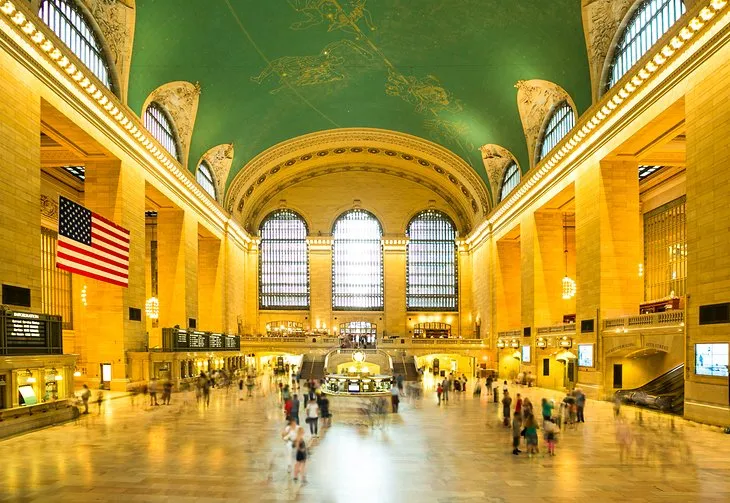 The vast Main Concourse inside Grand Central Terminal with famous clock and celestial ceiling.
The vast Main Concourse inside Grand Central Terminal with famous clock and celestial ceiling.
Lincoln Center: A Hub for Performing Arts
For lovers of music, dance, and theater, Lincoln Center is a must-visit. This sprawling complex on the Upper West Side is home to prestigious institutions like the Metropolitan Opera, the New York Philharmonic, the New York City Ballet, and The Juilliard School. Attending a performance here is an unforgettable cultural experience.
Beyond ticketed events, the Lincoln Center campus itself is beautiful to explore, with fountains, plazas, and impressive architecture. In the summer months, the “Summer for the City” series offers numerous free outdoor performances and events, making world-class arts accessible to everyone. It’s a place where artistic excellence thrives and is shared with the city.
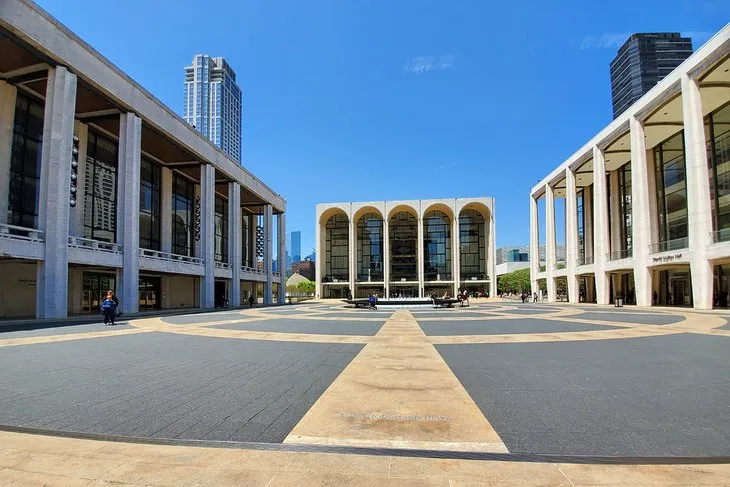 Fountain and plaza in front of the Metropolitan Opera House at Lincoln Center for the Performing Arts.
Fountain and plaza in front of the Metropolitan Opera House at Lincoln Center for the Performing Arts.
One World Observatory: Standing Tall
Rising from the site of the original World Trade Center, One World Trade Center is the tallest building in the Western Hemisphere. At the top, the One World Observatory offers breathtaking panoramic views from floors 100, 101, and 102. The innovative SkyPod elevators provide an immersive ascent, showcasing the transformation of the city’s skyline over centuries.
The observatory experience includes interactive exhibits and stunning vistas that stretch across the city, waterways, and beyond. It’s a modern marvel offering a contemporary perspective on New York’s scale and resilience. Visiting the observatory provides a sense of how the city has rebuilt and continues to reach for the sky, a powerful symbol among the new york most famous places.
 Exterior view of the One World Trade Center skyscraper against a cloudy sky.
Exterior view of the One World Trade Center skyscraper against a cloudy sky.
Planning your trip and wondering about specific activities? Exploring the diverse attractions mentioned above will give you plenty of ideas on [what to do in new york].
The Frick Collection (Frick Madison): Masters in an Intimate Setting
While the original Frick Collection mansion is currently undergoing renovation, a selection of its renowned masterpieces is on display at Frick Madison, the temporary location. Housed in the former Whitney Museum building designed by Marcel Breuer, the collection features European paintings, sculpture, and decorative arts from the Renaissance to the 19th century.
Despite the temporary setting, the quality of the collection remains exceptional, with works by artists such as Rembrandt, Vermeer, El Greco, and Goya. The presentation allows for focused appreciation of individual pieces. It offers a more intimate museum experience compared to the vastness of the Met, allowing you to connect with art on a personal level.
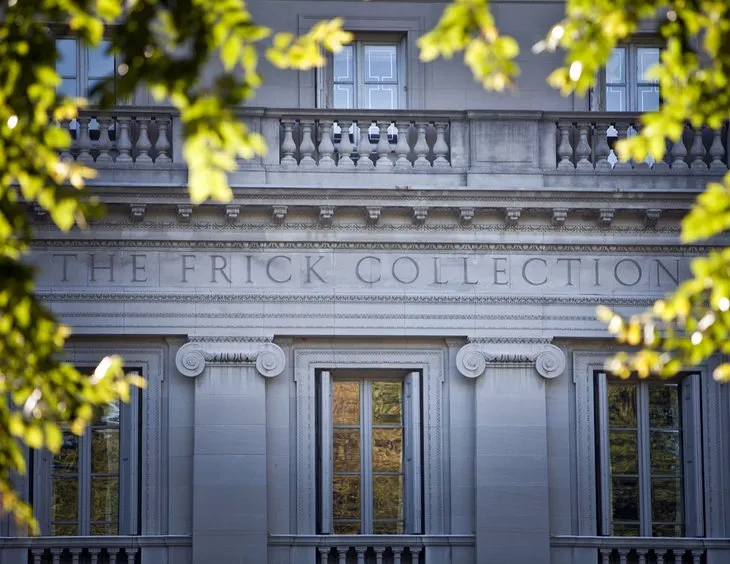 Exterior view of the classical mansion housing the original Frick Collection.
Exterior view of the classical mansion housing the original Frick Collection.
New York Public Library: Knowledge and Architecture
The main branch of the New York Public Library, officially the Stephen A. Schwarzman Building, is a magnificent Beaux-Arts structure located on Fifth Avenue. Guarded by its famous marble lions, Patience and Fortitude, it’s not just a place for books but a landmark of architectural beauty and intellectual pursuit.
Stepping inside reveals impressive halls, including the grand Rose Main Reading Room (when accessible) and the majestic Astor Hall. The architecture itself is inspiring, reflecting the era’s belief in the power of public knowledge. It’s a place where history and learning intertwine, offering a quiet yet grand respite amidst the city’s energy.
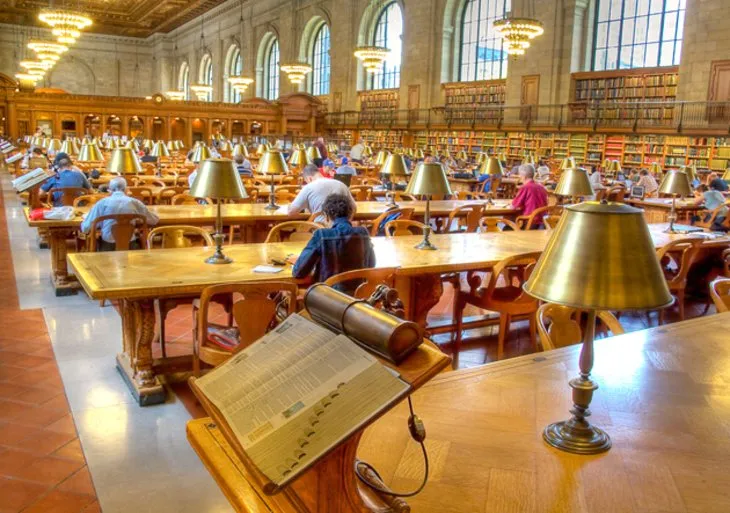 Entrance facade with lions Patience and Fortitude at the New York Public Library.
Entrance facade with lions Patience and Fortitude at the New York Public Library.
Wall Street: The Heart of Finance
Wall Street is globally recognized as the center of the financial world. While the street itself is relatively short, the surrounding Financial District is home to major institutions like the New York Stock Exchange. The area buzzes with a different kind of energy – one driven by global markets and commerce.
Beyond the financial buildings, you’ll find historic sites like Federal Hall, where George Washington was inaugurated, and the impressive Trinity Church. Don’t miss the iconic Charging Bull sculpture near Bowling Green, a popular photo spot that has become a symbol of American capitalism. Exploring Wall Street gives insight into the economic engine that powers much of the world and is a key part of the story of new york most famous places.
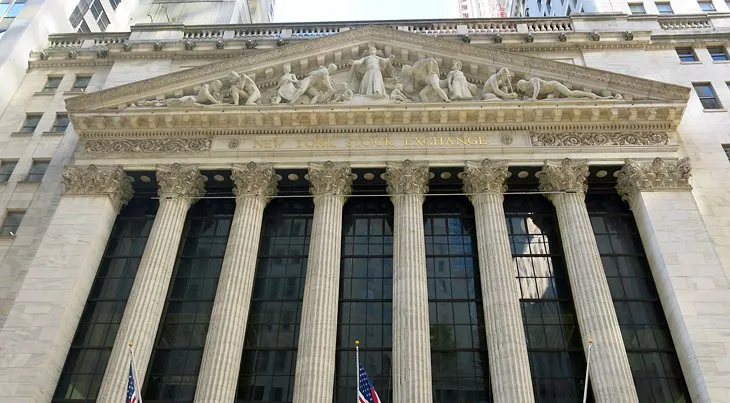 Exterior view of the New York Stock Exchange building on Wall Street.
Exterior view of the New York Stock Exchange building on Wall Street.
Radio City Music Hall: Art Deco Entertainment
Part of the Rockefeller Center complex but a landmark in its own right, Radio City Music Hall is a stunning example of Art Deco design and a famous entertainment venue. Home to the legendary Rockettes, this historic theater hosts concerts, special events, and the annual Christmas Spectacular.
Built in the 1930s, its lavish interior and grand stage are truly impressive. Even if you don’t catch a show, taking a tour provides fascinating insights into the building’s history, architecture, and the secrets of its famous stage technology. Its prominent marquee is a dazzling sight in the Midtown landscape.
 The prominent marquee of Radio City Music Hall in Midtown Manhattan at dusk.
The prominent marquee of Radio City Music Hall in Midtown Manhattan at dusk.
St. Patrick’s Cathedral: A Gothic Marvel
Located right on Fifth Avenue, St. Patrick’s Cathedral is a magnificent Roman Catholic cathedral and a prominent example of Gothic Revival architecture. Its towering spires, intricate facade, and stunning stained-glass windows offer a peaceful contrast to the surrounding bustling city streets.
Completed in 1879, the cathedral has undergone extensive restoration to maintain its grandeur. Stepping inside, you’re greeted by soaring ceilings, a massive organ, and beautiful altars and chapels. Whether you’re religious or not, the sheer artistry and serenity of the space are deeply affecting. It’s a spiritual and architectural gem among the new york most famous places.
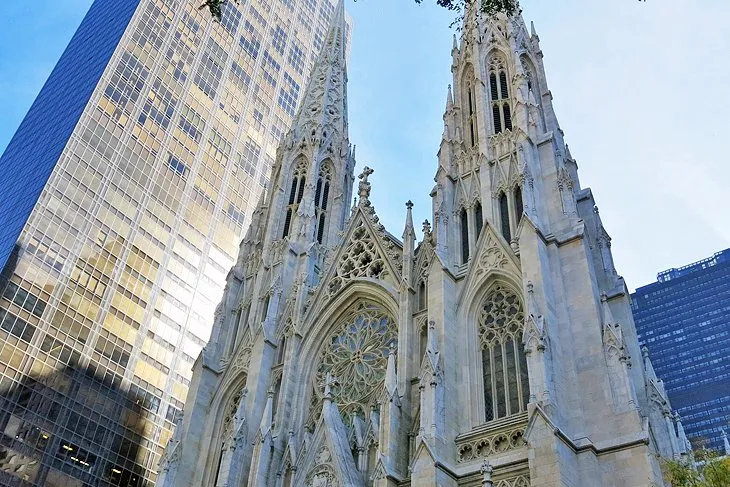 Gothic Revival facade of St. Patrick’s Cathedral on Fifth Avenue, New York.
Gothic Revival facade of St. Patrick’s Cathedral on Fifth Avenue, New York.
Carnegie Hall: Legendary Sound
A name synonymous with musical excellence, Carnegie Hall is one of the world’s most prestigious concert venues. Since its opening in 1891, it has hosted countless legendary musicians and performers across genres, celebrated for its exceptional acoustics.
While the ultimate experience is attending a performance, guided tours offer a chance to learn about the hall’s rich history, architecture, and the artists who have graced its stages. It’s a pilgrimage site for music lovers and a place that embodies New York’s status as a global cultural capital.
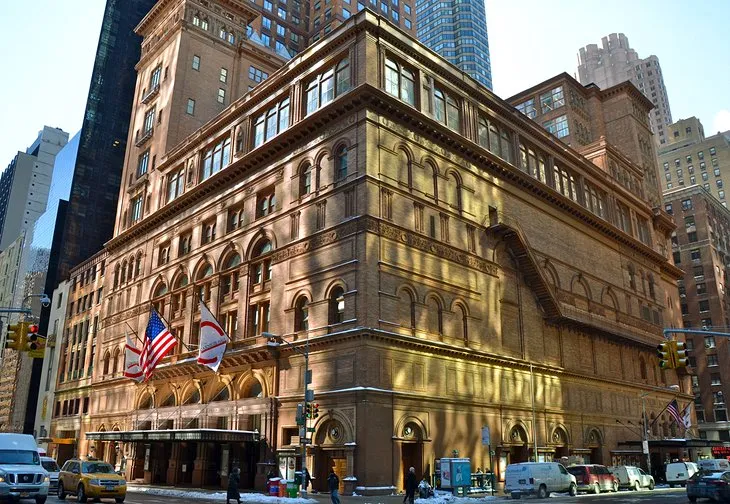 Exterior view of the historic Carnegie Hall concert venue in New York City.
Exterior view of the historic Carnegie Hall concert venue in New York City.
For travelers trying to maximize their trip duration, knowing [what to see in new york in 2 days] is key. Focusing on a few geographically close landmarks or choosing sites based on your specific interests (like museums or parks) is a good approach.
Bryant Park: Midtown’s Town Square
Nestled behind the New York Public Library, Bryant Park is a vibrant public space that serves as a popular gathering spot for locals and tourists alike. Once a less desirable area, it has been transformed into a lively urban oasis with lawns, gardens, and various activities throughout the year.
In summer, you might find free movie screenings, yoga classes, or simply people relaxing on the grass. In winter, it hosts a popular holiday market and a free ice-skating rink, a charming alternative to the one at Rockefeller Center. It’s a testament to the power of public spaces and a great place to take a break, enjoy a coffee, or simply watch the city go by.
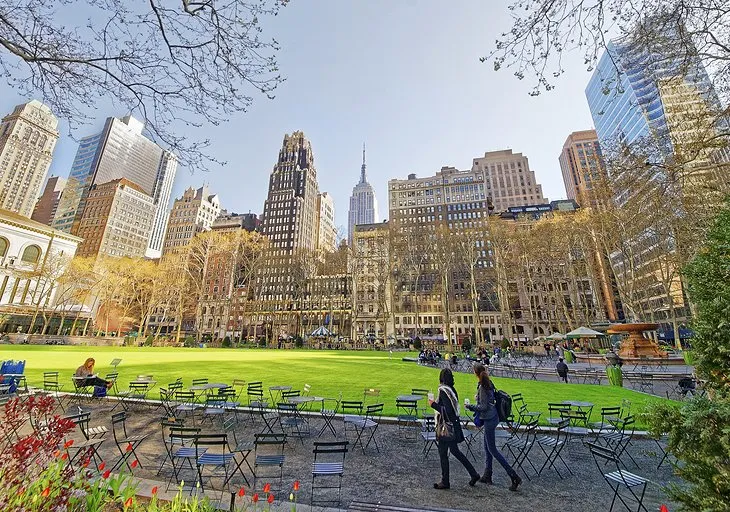 Green lawns and trees in Bryant Park with surrounding skyscrapers in New York City.
Green lawns and trees in Bryant Park with surrounding skyscrapers in New York City.
Best Time to Visit New York, NY
Choosing the best time to visit New York City really depends on your preferences. The city is captivating year-round.
- Spring (April to Early June) and Fall (September to Early November) are often considered ideal. The weather is pleasant, perfect for walking and exploring outdoor attractions like Central Park and the High Line. Crowds are generally smaller than peak summer or holiday season, and prices for flights and accommodation can be more reasonable. Autumn foliage in the parks is stunning, and spring brings beautiful blossoms.
- Summer (June to August) is hot and humid, but the city is alive with outdoor events, street festivals, and opportunities to escape to nearby beaches. It’s peak tourist season, so expect large crowds and higher prices.
- Winter (December to February) is magical, especially around the holidays in December, with festive decorations, the Rockefeller Center tree, and holiday markets. January and February are the coldest months, offering the lowest prices and smallest crowds, though the weather can be harsh. If you’re specifically interested in holiday activities, December is the perfect time to explore [what to do in new york in december].
Ultimately, the best time to visit is when it aligns with the experiences you seek, though spring and fall offer a balance of good weather and fewer crowds.
Exploring the new york most famous places is an adventure that reveals layers of history, culture, and resilience. Each site tells a part of the city’s story, inviting you to connect with its past, present, and vibrant future.
